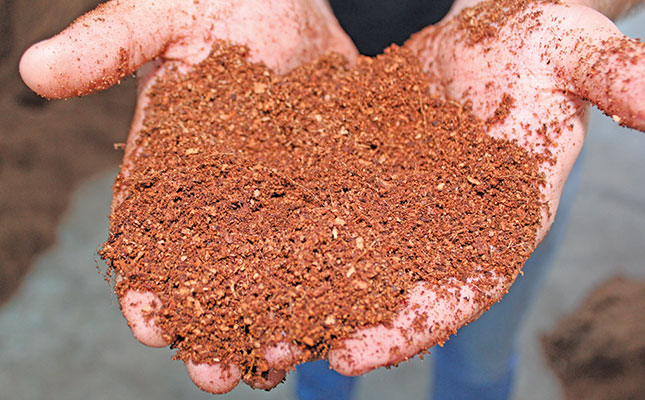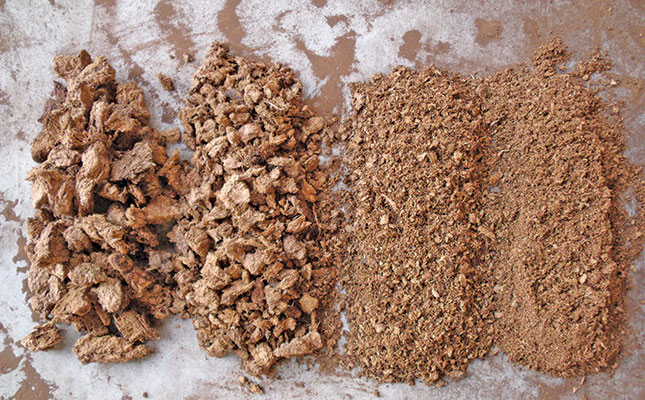| 500Foods shared this story from |

Greenhouse farming presents a lucrative opportunity for hands-on farmers with an eye for detail. Quicker turnaround means a shorter time before return on investment, despite higher input costs.
On the other hand, greenhouse farming is an exact science: what you put in can make or break the operation.
In most farming operations, the soil or growing medium requires more attention than any other aspect. Tunnel farmers have a number of options, from coir peat to newer innovations such as perlite.
Whichever growing medium is selected, it should be of high quality and sourced from a reputable supplier.
Sterilised
“You’re setting yourself up for failure by using inferior products, or those that haven’t been sterilised properly,” cautions Mbali Nwoko, the owner of Green Terrace, which cultivates peppers in greenhouses in Johannesburg.
She opts for a growth medium comprising sawdust and coir peat.
“I have several suppliers I rely on whom I can trust to deliver clean products. You can’t just use any old sawdust; it has to be sterilised properly to ensure there are no pathogens or chemicals that can harm the crops.
“The peat needs to have the correct pH levels and the salt content mustn’t be too high or it’ll burn the roots of the plants.”
Benefits of coir peat
Nwoko explains that the plants can be sterilised in the plastic bags they are grown in; there is no need to empty the bags, clean the contents, and repack everything.
“I put a spore kill product through the irrigation system, so it saves a lot of time and labour. I then simply plant the next crop directly back into the sterilised coir peat.”
She adds that a growth medium is far more efficient than soil for crop production.
“You have complete control of what goes into the plant. The crops grow faster because you’re controlling the whole environment and how many nutrients the plant gets. You can get between 90% and 100% of your expected yield because of this. None of the nutrients that are added to the growth medium are wasted; everything is absorbed.
“This isn’t the case with soil, which has its own mineral composition that can interfere with the nutrients you add.
“There’s also the added benefit of less weeding. So you save on labour.”
The right medium
Every crop has its own unique needs, and with the variety of growth mediums on the market, farmers need to balance cost and efficiency.
Lelanie Trollip, owner of Bark ’n Fibre Enterprises, which markets pine bark, coir peat and sphagnum peat, says that all three products can be used separately or blended together with additives such as lime and perlite to make specific blends for specific crops.
“A very efficient growing medium is either sphagnum peat or coir peat blended with pine bark. In this way, you get the best qualities of each product combined in one. The pine bark helps maintain aeration and structure due to its lignin, and the sphagnum peat or coir peat adds humus and fibres, which have great re-wetting capabilities.”
Perlite is the latest development in growth mediums. A volcanic glass (usually obsidian), it is mined and then subjected to heat. This causes it to expand significantly, creating a light, strong, beaded material that is ideal as a growing medium. Eldon Kruger, marketing director of Pratley, which markets Grolite (a type of perlite), says that perlite promotes water drainage while maintaining optimal moisture conditions in the root zone.
“A common problem with seedlings is overwatering, which ultimately leads to root rotting. While draining excess water, perlite retains optimal moisture levels in the root zone of the plant, ensuring full root development. The product assists with aeration and prevents compaction of the soil or growing medium.”
Trollip and Kruger give an overview of the various types of growth medium:
- Grolite is a hard-beaded, well-sealed perlite mined in KwaZulu-Natal. The ore is processed in proprietary furnaces near Krugersdorp, where it is crushed to sugar-grain size and passed through a specially designed furnace. The volcanic glass softens and expands into strong, lightweight glass beads.
- Pine bark is a locally sourced waste product from the timber and paper industry. It goes through an intense thermophylic composting process to eliminate pathogens and prevent nitrogen drawdown. The composting process is kickstarted with an organic urea and molasses mix, the temperature is measured continuously to monitor the composting process, and the product is turned to aerate and accelerate the heat build-up.
- Coir peat is the husk of the coconut, left over after the oils and fruit have been removed. It is washed, milled and screened to provide a growing medium. Coir peat is sourced mainly from Mozambique, India and Sri Lanka.
- Sphagnum peat is partially decomposed sphagnum moss mined frrom peat bogs in Europe and Canada. Its large cell structure allows it to absorb air and water like a sponge. It absorbs nutrients and releases them over time as the plant requires them.

Matching the growth medium to the plant
- Perlite is used extensively as a growth medium in nurseries for seedlings or to assist with the rooting of cuttings in hydroponic systems. The product can be used on its own, mixed with other mediums, or mixed into soil to assist with aeration.
- Pine bark is used to aerate soils, as a mulch to control evaporation and weeds, or as part of a seedling, germination or potting medium.
- Coir peat can be used for hydroponics and long-term crops such as blueberries.
- Sphagnum peat is used in soil block production for seedlings. The clay content of the soil causes the soil block to stick together; the peat helps prevent this by reducing the density of the block and improving its structure.
Advantages
- Perlite increases fertiliser efficiency, which improves plant health and growth. The fertiliser is kept in the root zone, where it is taken up effectively by the plant. Plants grown in perlite therefore have an advantage, as water and nutrients are readily available. Having passed through a high-temperature furnace, perlite is free of weeds and pathogenic microbes that could adversely affect the growth of the plant.
- Pine bark is lignitic (hard) and therefore keeps its structure and aeration without compacting.
- Coir peat is a type of cellulose (soft), but can retain its structure for fairly long due to its fibre content. It re-wets easily.
- Sphagnum peat is also cellulose, but can be combined with a coarse product to retain structure. It re-wets fairly easily. With its naturally low pH, it is ideal for crops such as blueberries.
Efficiency
- Perlite provides better drainage in the root zone than coir peat does. Unlike coir peat, which is an organic material, perlite has passed through a high-temperature furnace, which renders it sterile.
- Pine bark: If it dries out, it becomes hydrophobic (repels water). A wetting agent is required to re-wet the product.
- Coir peat can have a very high salt content, and a buffering wash with a calcium nitrate water blend may be necessary.
- Sphagnum peat: It is better to use a peat where fibres 2mm and shorter have been screened out as the dust causes clogging.
Can it be reused?
- Perlite can be reused due to its hard surface structure. Sterilising it with steam will make it last for several seasons. Grolite is even better in this respect. Coming from a particularly old volcanic deposit, it has a stronger surface structure than most ordinary perlites, which are mined from young volcanic regions. This reduces degradation during mixing.
- Pine bark can be reused, but needs expensive treatment.
- Coir peat can be reused two or three times.
- Sphagnum peat compacts when reused, so it is best to add 20% coarse bark to retain the structure of the growing medium.
Cost
Perlite is more expensive, but this has to be balanced with the fact that it offers the potential of a higher crop yield than the other growing mediums. Compared with the cost of perlite, pine bark is 50% cheaper, coir peat 35% cheaper and sphagnum peat 25% cheaper.
Email Eldon Kruger at eldonk@pratley.co.za, or Lelanie Trollip at lelaniet@gmail.com.

